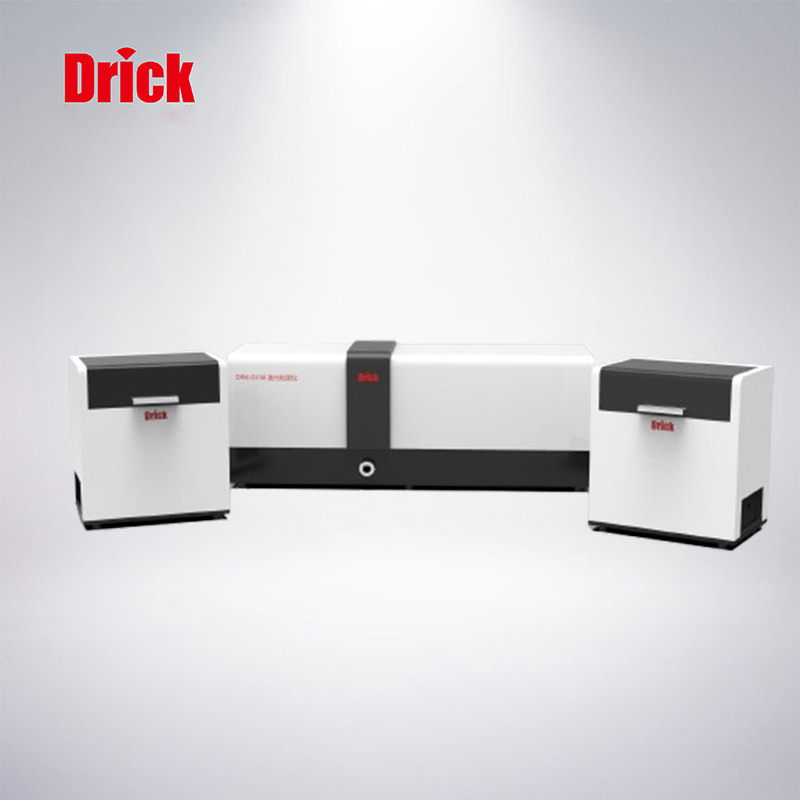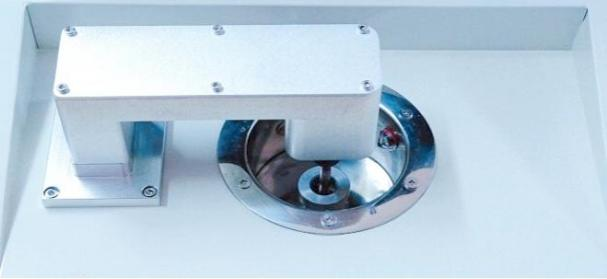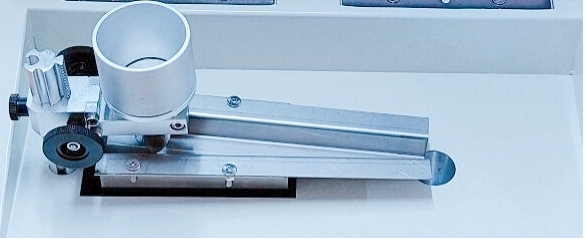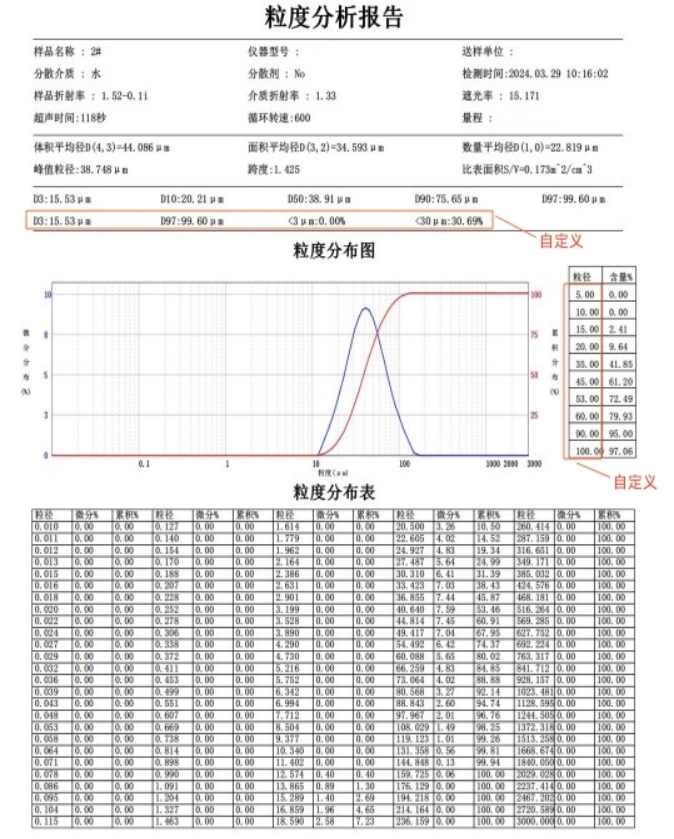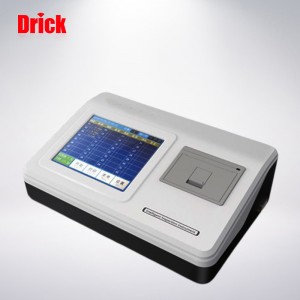Laser Particle Size Analyzer DRK-G100
DRK-G100 Laser Particle Size Analyzer
DRK-G100 laser particle size analyzer adopts a split design, with the sampler and the main unit separated. It supports wet and dry detection dispersion methods, enabling more convenient mode expansion and conversion. With its plug – in pipeline design, switching the detection method can be achieved by simply matching the corresponding sampler and detection window. It is also optional to configure micro – volume, large – capacity, or corrosion – resistant sampling systems.
In terms of principle, the DRK-G100 laser particle size analyzer uses the full – range Mie scattering theory. Its design fully complies with ISO international technical standards. Structurally, it features a pure helium – neon gas light source and a large – angle, non – uniform, crossed, fan – shaped, super – large detector array design. This design fully considers the detection angle and detection sensitivity, ensuring a wide – range test scope and the accuracy and repeatability of test results.
Wet Dispersion
The ultrasonic dispersion system of the DRK-G100 laser particle size analyzer can fully disperse the sample to be tested. The high – power ultrasonic generator (100W) is equipped with a dry – running protection design. The ultrasonic time can be adjusted automatically and continuously. It can be set according to the difficulty of sample dispersion. With good shielding treatment, ultrasonic dispersion and sample testing can be carried out simultaneously. Even particles with strong agglomeration properties can be fully dispersed to obtain real particle size distribution data.
The sample dispersion cell is made of stainless steel with a unique circular design. It is convenient for circulating and draining liquid. Its micro – arc design prevents dust and dirt accumulation, making it easy to clean. It also has a liquid – level protection device.
The wet dispersion method has automated functions such as automatic water inlet, automatic testing, automatic optical path state determination, automatic bubble elimination, and automatic cleaning. Liquids such as distilled water, pure water, and alcohol can be used as the dispersion medium.
Circulation Stirring System
Select an appropriate circulation stirring speed according to the characteristics of the sample to be tested to prevent particle sedimentation in the circulation pipeline. The circulation pump speed can be adjusted automatically and continuously, with a digital display for setting. During the testing process, turning on the ultrasonic function can not only avoid testing errors caused by bubbles generated due to excessive circulation speed but also prevent particle agglomeration during the circulation process.
Dry Dispersion
The sample is evenly conveyed into the high – pressure airflow through the automatic dry powder sampler. Driven by the high – pressure airflow, it is continuously and rapidly sprayed into the disperser. By the time it reaches the outlet of the disperser, the sample has been fully dispersed. After passing through the laser beam, the sample enters the collector or vacuum cleaner, and the particle size distribution information is immediately displayed on the computer.
- For dry dispersion, no dispersant or solvent is required. The dispersion principle is shown in the following figure.
- It uses a silent, oil – free air compressor, equipped with an efficient condenser to ensure the generation of pure compressed air.
- It enables instantaneous dispersion and measurement, with high testing accuracy and fast analysis efficiency. The process from sample injection to result output is completed instantaneously.
- It has automatic sample injection and supports fully automatic one – key operation.
- The duck – bill – shaped nozzle greatly improves the detection stability and accuracy.
| Specification Model | DRK – G100W (Wet), DRK – G100D (Dry), DRK – G100 (Wet and Dry Dual – Use) |
| Testing Range | Wet: 0.1 – 1000μm Dry: 0.1 – 1000μm |
| Repeatability Error | < 1% (National Standard Reference Material D50) |
| Measurement Principle | Mie Scattering Principle |
| Accuracy Error | < 1% (National Standard Reference Material D50) |
| Measurement Method | Wet: Stirring and Ultrasonic Dual – Stage Dispersion Dry: Duck – Bill – Shaped Nozzle, Oscillation and Venturi Dual – Stage Dispersion |
| Optical Path System | High – Transmittance Single – Lens, Automatic Centering, Automatic Optical Path Determination |
| Laser Light Source | Pure Helium – Neon Gas Laser |
| Sample Cell | 400ml Micro – Arc Bottom, with Physical Liquid – Level Meter, Designed to Prevent Particle Aggregation and Deposition |
| Detector | Sensitive Detection Units, Distributed in Front, Rear, and Side – Facing Fan – Shapes |
| Operation Method | Both wet and dry methods support one – key full – automatic and manual operation |
| Circulation Rotation Speed | Up to 5000 revolutions, continuously adjustable |
| Ultrasonic Generator | 100W, adjustable from 0 – 9 minutes and 50 seconds, with dry – running protection design |
| Interface Method | Dual Communication of Network Port and USB |
| Instrument Structure | Split – Type, Metal Body, Quick – Insert Pipelines |
Application Scope
It is suitable for particle size analysis and testing in various fields such as powder coatings, building materials (cement), metallurgy and chemical engineering, coal and minerals, pharmaceuticals and pesticides, health products, ceramic abrasives, catalysts, precious metals, etc. Examples include heavy calcium carbonate, light calcium carbonate, talcum powder, kaolin, graphite, wollastonite, brucite, barite, mica powder, bentonite, diatomite, clay, silica, garnet, zirconium silicate, zirconia, magnesium oxide, zinc oxide, river sediment, lithium – battery materials, catalysts, phosphor powders, cement, abrasives, pharmaceuticals, pesticides, food, coatings, dyes, ceramic raw materials, chemical materials, nanomaterials, paper – making fillers and coatings, and various emulsions. Based on the design principle of the all – in – one laser particle size analyzer, it is applicable to the detection of not only solid powder particles but also mixed solutions such as suspensions and emulsions.
Analysis Software
- The PADMAS (Particle Diameter Measure & Analysis System) is a powerful and feature – rich software. It can process test data through functions such as averaging, statistics, comparison, and trend analysis. It supports multiple formats including differential distribution, cumulative distribution, standard classification, volume distribution, area distribution, number distribution, R – R distribution, custom classification, and classification by mesh size. 
- High Visibility: The testing software has a user – friendly interface. The testing process is clearly visible, with instant refresh, high visibility. It allows users to observe the operating status of the instrument and the fluctuation of test data at any time, and analyze the authenticity and reliability of the measured data.
- Objective and Real: The analysis software performs automatic calculations.
- Easy to Operate: Standardized, quantitative, and simple operations can be mastered in a short time.
For customers in the pharmaceutical industry, the software complies with the GMP regulations of the Pharmacopoeia. It has functions such as audit trail, electronic signature, permission setting, audit trail, and non – modifiable data. It can also provide 3Q templates to assist in 3Q certification.
Test Report
The test report includes a particle size distribution curve, a detailed particle size data table, and a custom – made simple table. It contains characteristic parameters such as D3, D10, D50, D90, D97, D(1,0), D(3,2), D(4,3), span, peak particle size, and specific surface area. There are also multiple custom – made parameters that can be input as needed. The weight – based specific surface area and volume – based specific surface area can be interchanged. The particle size distribution graph and particle size data chart can be saved as pictures. It also supports PDF, WORD, and EXCEL report templates. It supports printing test reports in Chinese and English. The header and footer can be modified as required, and there is a print preview function.
Note: Due to technological progress, the information may be changed without prior notice. The product shall be subject to the actual product delivered later.
Products categories
-

Phone
-

E-mail
-

Whatsapp
-

Top



